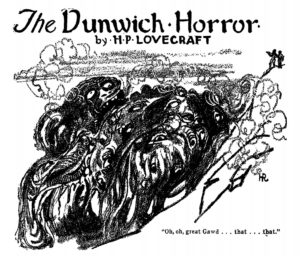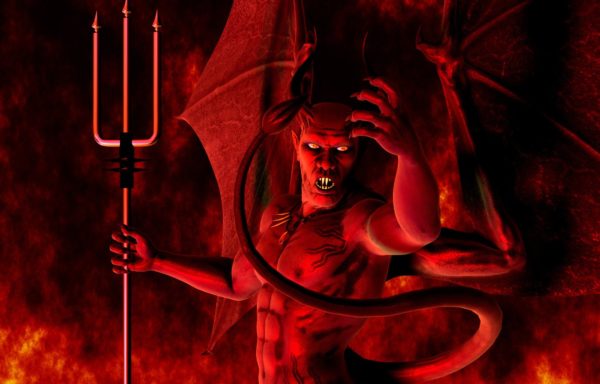Steve Harrison Reconsidered
It has become fashionable to regard Robert E. Howard’s Steve Harrison as the author’s lone failure. Much is made of what Howard expressed in letters about disliking hardboiled detective stories as both an author and a reader. Emphasis is placed on the fact that very few of the Steve Harrison stories found a market in the author’s lifetime. Critics measure the Steve Harrison tales against Hammett and Chandler and dismiss Howard’s efforts with disdain. All of this ignores how the character first came to prominence in the late 1970s when Berkeley Books collected “Lord of the Dead” and “Names in the Black Book” in Skull-Face.
 As a 45-year-old man today, I first discovered Robert E. Howard through the worlds of Conan and Kull from Marvel Comics. My youth in the 1970s had seen me move from Tarzan films to the far more exciting jungle adventures found in DC and Marvel Comics. These comics led me to challenge myself to read the wonderful Ballantine editions of the original Tarzan series by Edgar Rice Burroughs. As a comics fan, the cover art by Neal Adams and Boris Vallejo was half the attraction. A trio of low budget AIP movies with Doug McClure led me to discover the worlds of Caspak and Pellucidar which were back in print courtesy of Ace Books with gorgeous cover art by Frank Frazetta. I soon found Tarzan in Pellucidar in the Marvel Comics series. There was an excitement that made me believe there were far more fantastic worlds to discover.
As a 45-year-old man today, I first discovered Robert E. Howard through the worlds of Conan and Kull from Marvel Comics. My youth in the 1970s had seen me move from Tarzan films to the far more exciting jungle adventures found in DC and Marvel Comics. These comics led me to challenge myself to read the wonderful Ballantine editions of the original Tarzan series by Edgar Rice Burroughs. As a comics fan, the cover art by Neal Adams and Boris Vallejo was half the attraction. A trio of low budget AIP movies with Doug McClure led me to discover the worlds of Caspak and Pellucidar which were back in print courtesy of Ace Books with gorgeous cover art by Frank Frazetta. I soon found Tarzan in Pellucidar in the Marvel Comics series. There was an excitement that made me believe there were far more fantastic worlds to discover.
I found these worlds in Robert E. Howard and Edgar Rice Burroughs was never quite the same. Burroughs was Paradise and Howard was Paradise Lost, but damn if that Forbidden Fruit didn’t taste better than anything else. I was a latecomer to church. Consequently, I resented losing out on Porky Pig cartoons on Sunday mornings. My Mom attempted to entice me with a Children’s Bible. The illustrations were nice, but I was mainly interested in The Old Testament which at least had the Flood and Samson to commend it. Along came Conan and Kull comics and suddenly I found characters that could rival Tarzan but lived in a world closer to The Old Testament but far more interesting to my young mind.
By the time I was thirteen, I had enjoyed a brief obsession with Ian Fleming’s James Bond series before discovering Sax Rohmer’s Fu Manchu books. These opened a world that was to become my favorite retreat from reality and one that continues to resonate with me well into middle age. The Berkeley edition of Skull Face and the Donald M. Grant hardcover edition of Lord of the Dead immediately caught my eye when I first discovered them in my early twenties. Here was Robert E. Howard moving away from the fantastic worlds of his own imaginings and turned loose on the twentieth century. I was in my forties by the time I first encountered El Borak and, along with Steve Harrison, I now knew the Howard characters that held me under a spell greater than his barbarian heroes.
 Howard’s Weird Menace stories, despite their Rohmer influence, were also very much in keeping with his more celebrated sword and sorcery fiction. Steve Harrison was a powerful latter-day barbarian as equally at home with an axe as a pistol. Harrison teamed with Khoda Khan (from Howard’s El Borak tales) to battle the sorcerous Erlik Khan is reminiscent of the bond forged between Kull and Brule the Pict. Harrison removed from the seedy fog-enshrouded River Street to run down a voodoo cult in Bayou country could just as easily be set in Stygia. Those expecting traditional hardboiled gumshoe tropes are doomed to be disappointed, but fans of Howard’s fantastic fiction will find much that will prove the writer’s talents were not bound by place or time. Harrison, like Nayland Smith (the protagonist of the Fu Manchu series) has been granted a roving commission to run down the sort of exotic crimes that fall beyond the white man’s comfort zone of the 1930s.
Howard’s Weird Menace stories, despite their Rohmer influence, were also very much in keeping with his more celebrated sword and sorcery fiction. Steve Harrison was a powerful latter-day barbarian as equally at home with an axe as a pistol. Harrison teamed with Khoda Khan (from Howard’s El Borak tales) to battle the sorcerous Erlik Khan is reminiscent of the bond forged between Kull and Brule the Pict. Harrison removed from the seedy fog-enshrouded River Street to run down a voodoo cult in Bayou country could just as easily be set in Stygia. Those expecting traditional hardboiled gumshoe tropes are doomed to be disappointed, but fans of Howard’s fantastic fiction will find much that will prove the writer’s talents were not bound by place or time. Harrison, like Nayland Smith (the protagonist of the Fu Manchu series) has been granted a roving commission to run down the sort of exotic crimes that fall beyond the white man’s comfort zone of the 1930s.
That last bit is likely the key for me. Howard’s characters are men out of time. Whether Kull or Conan or Solomon Kane or Steve Harrison or El Borak, they are men without homes who function best in exotic worlds. They are old souls who do not fear a world that isn’t white and civilized. They are men at home with Eldritch terrors, in exotic jungles, facing Oriental cults or serpent worshippers. They know this world is far older than white civilization with its fragile sense of security and a neat, orderly view of the world and its creation. They are not afraid to step beyond conventions for the non-white world of exotic danger and pagan thrills promise far more than the restrictions of civilization. And so it is for readers these past 80 years who understood that Robert E. Howard’s fiction was finite, but the promises they hold were infinite.
For anyone who accepts the common belief that Howard stumbled and fell when he created Steve Harrison, I urge you to revisit “The People of the Serpent,” “Names in the Black Book,” or “Graveyard Rats” and see them for the masterly Tales of Weird Menace they are and enjoy the same wonderful world of Robert E. Howard as it exists in a modern world. For a world of fantasy and escape is not ossified in the past, it is accessible today as it was yesteryear. You just need to step outside the confines of a conventional world that is safe and dull and realize the world is as it ever was and always worth discovering Gnostic truths and exploring uncharted corners. The key is to read and learn to open your mind for ultimately, that is the lesson of Burroughs and Howard and Rohmer and every other author who raised the lantern and shone its light on shadows.
William Patrick Maynard is the authorized continuation writer for the Estate of Sax Rohmer. His third Fu Manchu thriller, The Triumph of Fu Manchu will be published by Black Coat Press later this year.




































Recent Comments